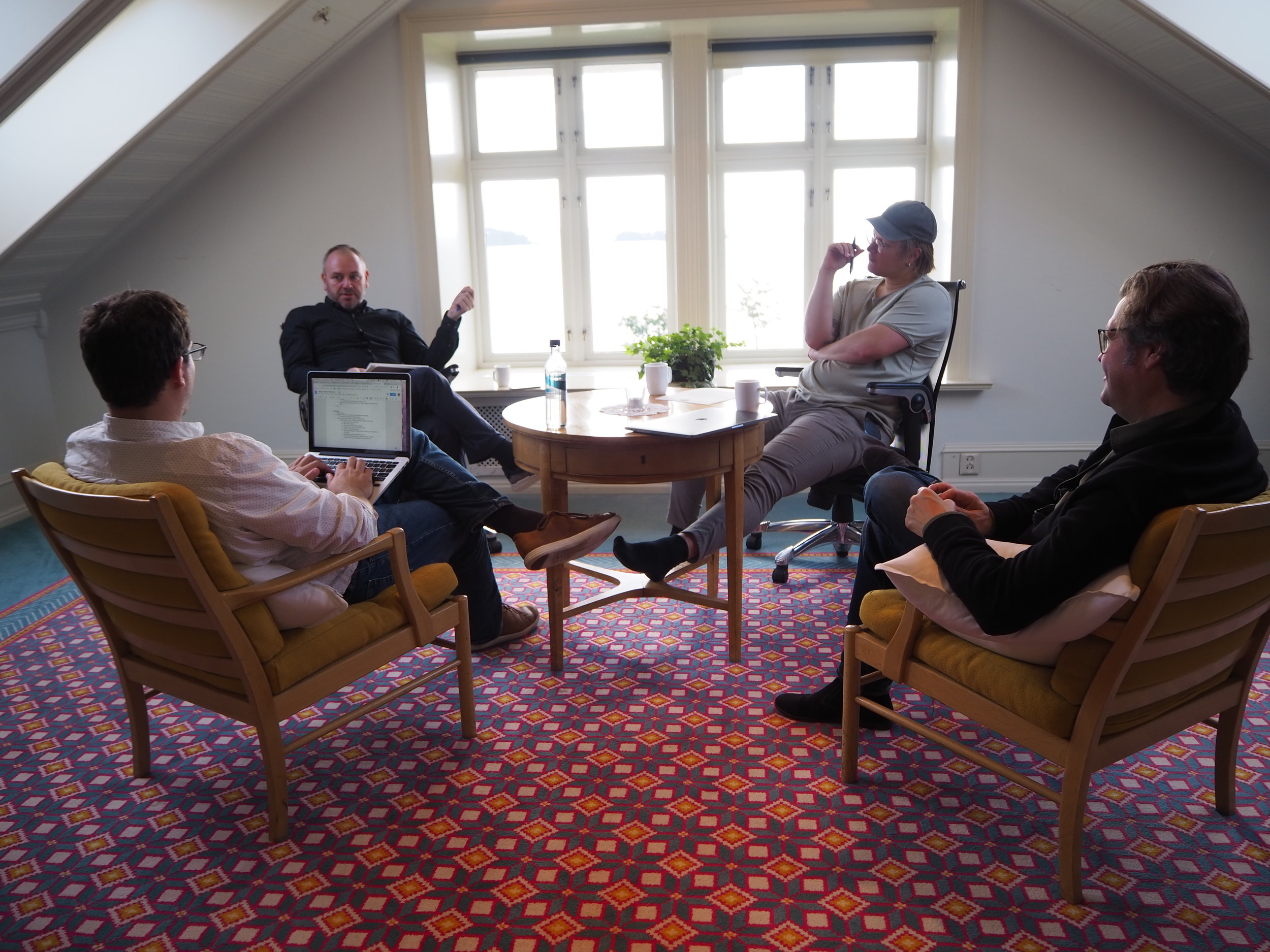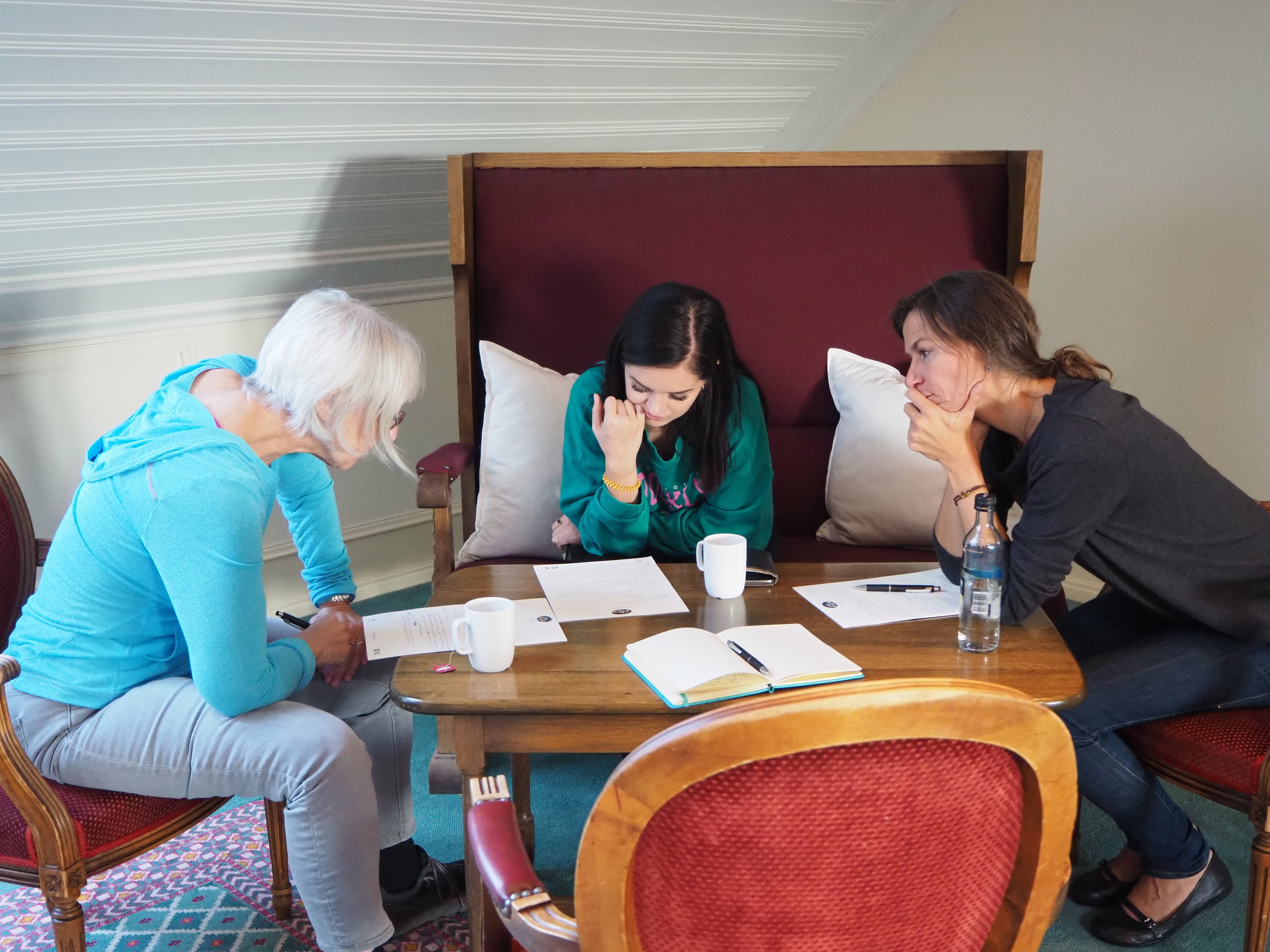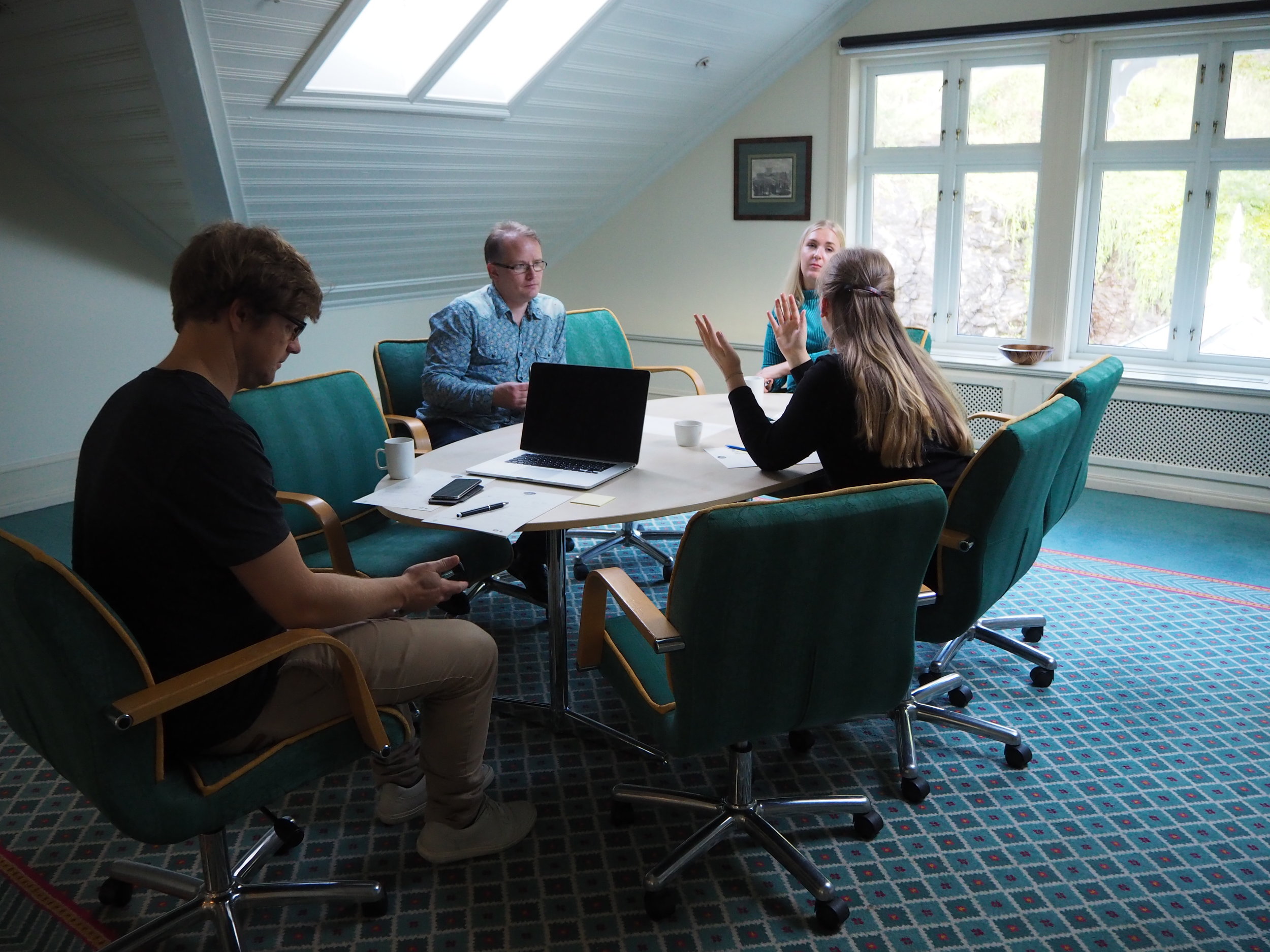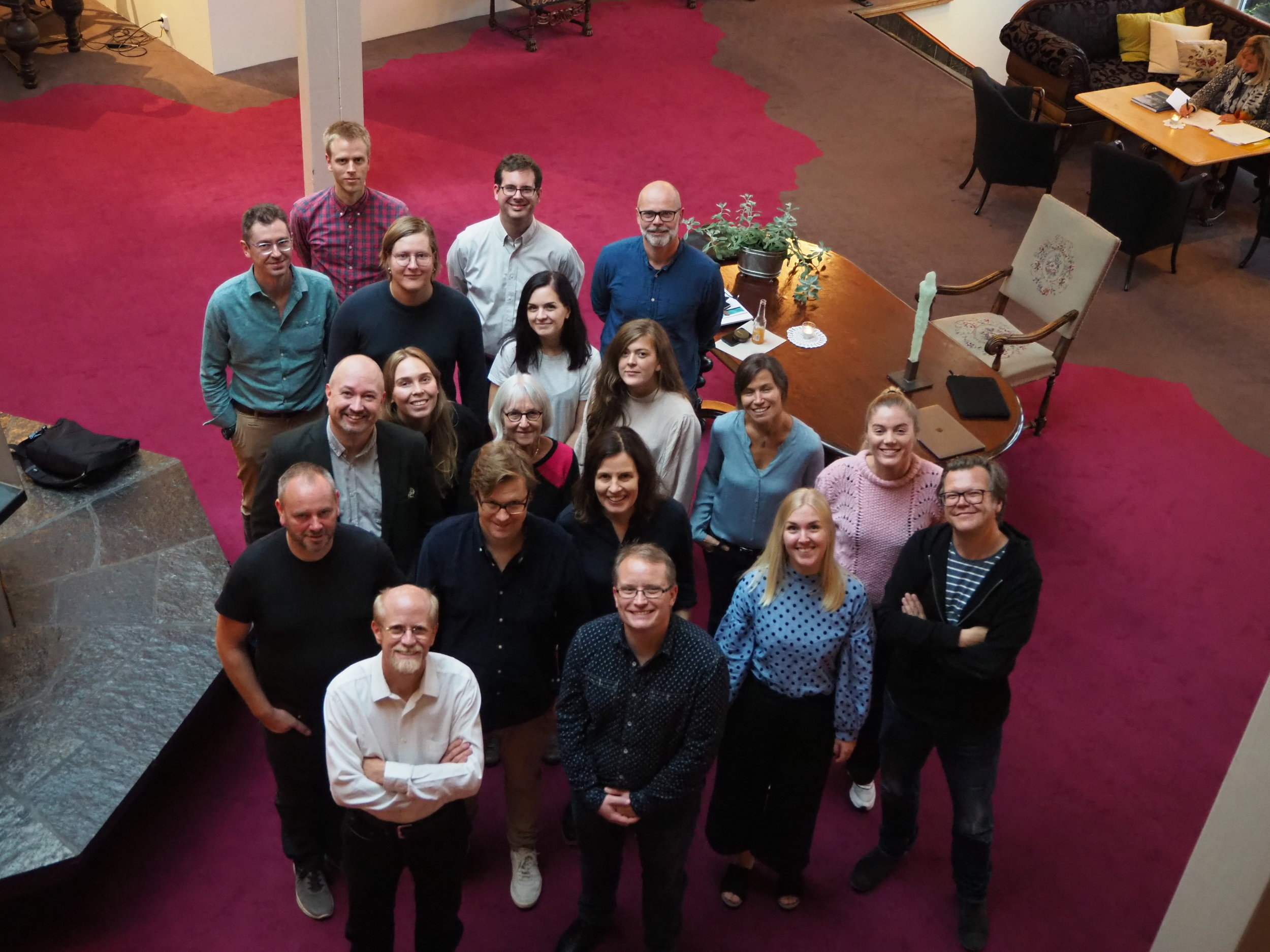Scenario Development 2018
By Astrid Gynnild
Anticipating alternative futures is an important dimension of responsible research and innovation (RRI). Foresight in the form of scenario development emerged to be a suitable approach in many settings during the project. The shared journey started at the ViSmedia Fall Seminar in 2018, and we subsequently provided scenarios as elements in articles and books and as collective endeavors in media classes. Below you find the results from the first workshop exercise in scenario development. The challenge was to come up with future scenarios that involved media, new technologies and surveillance.
«Norwegian Parliamentary Election 2021»
By : Nicholas Diakopoulos, Joakim Vindenes, Øyvind Vågnes & Lars Nyre
It’s early 2021 and the Norwegian national election campaign is starting to ramp up. The Progress party, led by Sylvi Listhaug, decides they’re going to take an unprecedented approach to convince undecided voters using media synthesis technology. The technology allows the campaign to create videos and audio of their candidate saying anything they like. Sylvi can be presented as saying a million different things to a million different people, personalizing the message to connect and convince individuals in whatever way works best. Sylvi signs off on it and gives her stamp of approval to campaign manager Espen Teigen, who manages and oversees all of the synthesized versions of herself that might be created. This strategy creates moral outrage in the political administrations of the contesting parties. The Progress Party campaign decides their first move is to create an email newsletter that targets different demographic groups with videos of Sylvi. The campaign manager types out a hundred different messages and the technology generates the videos of Sylvi saying those things. In a follow-up, the campaign decides to digitize Einar Gerhardsen, a well-known figure in Norwegian political history and one of the iconic “founding fathers” of the Labor Party’s vision of a postwar social-democratic welfare society, to lend credibility to the messaging. Einar is shown next to Sylvi in a synthesized video, creating a halo effect for her own message. The messages are hugely successful, motivating unprecedented numbers of undecided voters to not only contribute funds to the campaign, but also to mobilize and vote for the Progress Party. Meanwhile, journalists struggle to try to cover the campaign with their traditional techniques: it’s impossible to track all of the different message versions. What’s real and what’s not becomes increasingly difficult to tell, and journalists adopt of bio-sourcing policy in which they will not quote any media unless it’s verified, confirmed, and watermarked as recorded directly from the source.
Notes:
Setting: political campaigns, generate media of candidate saying whatever needs to be;
2021 Norwegian elections
Actor: Challenging party / progressive party; Sylvi Listhaug; Or different spokesperson to appear to different parts of the platform; (assumption moral values of other parties don’t dare).
Motivation: To be able to address and make targeted appeals for votes, fundraising; goal is to get a certain % of votes.
Mobilize: older figures: e.g. Reagan or an old leader.
Technology: synthesize audio and video of candidate saying whatever the campaign wants.
Capture the entire political platform and generate Q/A.
Where: is the media being published?
Target specific undecided voters; personalized email newsletters addressing you as an individual
email, social media,
Implications: for news media
Tracking all the variations of messages coming out from politician; how to know all the different versions of messages
News media is not able to effectively address these capabilities. Then people can be manipulated and there’s no counterweight. News media can only accept quotes that are biological source.
« Unpredictable Google Revealings»
By: Anja Salzman, Deborah G. Johnson, Astrid Gynnild & Maja Vedå.
Joe is a 17 year old boy living alone with his mother. Recently he has been fighting with his mother about his biological background. He is having an identity crisis and wants desperately to know who his biological father is. His mother will not reveal this information because Joe is a donor child and his mother signed a contract at a fertility institution that ensures that the father’s identity is kept hidden.
One friday night Joe goes to a party with some friends. The atmosphere is nice and they are all laughing and having a good time. Joe doesn’t pay too much attention to Pete who takes photos with his iphone throughout the party. Pete is a photojournalist and recently acquired a new app, Google Lens. The day after the party, Pete looks through the pictures tests how it works in combination with an image recognition app that is connected with
both Google Photo and Google Assistant. The app uses artificial neural networks that detect and identify persons, objects and landscapes to improve the optical recognition. As Pete looks through the pictures, the app matches one of the people in the picture with a picture of a rather famous older man. He sees the incredible resemblance between this man and one of the guys at the party (Joe). He finds this to be funny so he decides to reach out to the guy through the common facebook group they share in relation to the party. Joe receives the message and his heart almost skips a beat. He thinks this may be his father. He asks Pete for
more information about the man whose photo matched. Through ongoing conversations Pete learns that Joe believes the man to be his father. Pete decides to do more research and writes a story suggesting that the famous man may have a donor child.
Issues: image recognition mobile app (Google Lens) designed for information based on visual analysis, optical character recognition (OCR), camera operations based on virtual analysis, applies advanced deep learning routines, artificial intelligence and cloud computing, available since june 2018
«The moose.»
By: Frode Guribye, Thomas Wold, Camilla Mjøen Lien & Hedvig Idås
A bus filled with school kids is driving down a hillside road in a small town on their way back from summer camp. Suddenly a moose appears in the middle of the road. The bus driver loses control of the vehicle when trying to avoid the startled moose. The bus crashes and the children are tossed around in the bus as it flips over. Many of the children are severely injured and they are trapped inside the bus. As other cars are arriving at the scene of the crash a crowd of bystanders gathers around the bus and several of them start to film with their mobile phone. One of them starts an open live stream to a social media site. The stream gets a lot of attention and is also picked up by a large commercial station that wants exclusive rights to stream the event. They contact the bystander and offer money for getting the stream over to their site. The bystander accepts the offer and they take control over the live stream and get many extra viewers to their site and get more income from their advertisers. One of the parents of the children is at work and is made aware of the live stream from one of her coworkers, the concerned mother rushes to the site and starts watching the livestream of her badly injured son trapped inside the bus.
Issues: user-generated content, deprofessionalisation, ubiquitous presence of cameras, live streaming, the demand for more live coverage.
«Document Theft in 2025»
By: Turo Uskali, Hilde Otteren, Paul C. Adams & Sara Stene Pedersen
TV 2 has been given information they agreed not to publish. It is in the form of printed documents. You work for a competing news company that wants the info, but Media City Bergen has upgraded to a keyless entry system based on face and voice recognition. In order to steal the the documents you have to follow the chief editor of TV 2 and strike up a conversation about the news today. While the chief editor is talking you turn on the voice recorder you have in your pocket and push a button to call a drone equipped with a 3D facial scanner. The facial dimensions are uploaded from the drone to a public 3D-printer at the public library in Bergen along with a command to print on latex rubber to create a mask. When the print is done, you pick up the mask of the chief editor’s face replica and at the library and go to the Espresso House’s restroom, where there is no surveillance, to put on the mask. After midnight you go to Media City Bergen and use the synthesized voice while wearing the face mask in order to enter the external and internal doors. You get the documents.
Issues: data security, surveillance, voice and facial recognition, identity theft, 3D printing, drones, classified information




